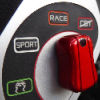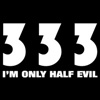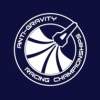OK, one for the engine experts;
It apears to be that the 2.0 Ecotec engine (B207/LSJ/Z20NET) has/had 2 different crank designs.
The early ones with a 1/2 counterweighted crank (4 weights) and the later version with a fully counterweighted 8CW crank... (build details will be disclosed later. ![]() )
)
Also not sure if the later 8CW version is forged or cast...
So, besides the overall weight weight issue, which design is better for a modified 7,5-8K SC engine? Read that most stock high rpm engines (Honda etc.) tend to all have a fully counterweighted crank to reduce crank vibrations and bearing life. Same 8CW design for the old C20XE redtops.
So, which one to use? The forged 4C or the (maybe cast) 8CW version?? ![]()
Edited by Exmantaa, 09 January 2014 - 12:02 PM.




















